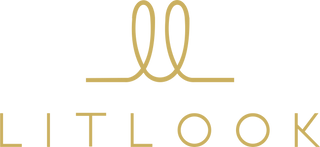Introduction:
In recent years, the demand for sustainable and eco-friendly fabrics has been on the rise, prompting both consumers and manufacturers to seek alternatives that are gentle on the planet. Among these alternatives is rayon, a versatile fabric known for its softness and drapability. In this blog post, we will delve into the world of sustainable rayon options, exploring how this fabric can be produced and sourced in an environmentally responsible manner.
Understanding Rayon:
Before we dive into sustainable options, let's first understand what rayon is and how it's typically produced. Rayon is a semi-synthetic fabric made from cellulose fibers, usually derived from wood pulp. Traditionally, the production process involves the use of harsh chemicals, which can have detrimental effects on the environment if not managed properly. However, advancements in technology have paved the way for more sustainable methods of rayon production.
Sustainable Rayon Production:
One of the key pillars of sustainable rayon production is the use of eco-friendly manufacturing processes. This includes implementing closed-loop systems, where chemicals used in the production process are recycled and reused, minimizing waste and reducing environmental impact. Additionally, some manufacturers have adopted alternative sources of cellulose, such as bamboo and eucalyptus, which are renewable and require less water and pesticides compared to traditional wood pulp.
Certifications and Standards:
To ensure the sustainability of rayon products, certifications and standards play a crucial role. Look for certifications such as the Forest Stewardship Council (FSC) certification, which verifies that the wood pulp used in rayon production comes from responsibly managed forests. Other certifications to consider include the OEKO-TEX Standard 100, which ensures that rayon textiles are free from harmful substances, and the Global Organic Textile Standard (GOTS), which certifies the organic status of the raw materials used.
Benefits of Sustainable Rayon:
Opting for sustainable rayon options not only benefits the environment but also offers several advantages for consumers. Sustainable rayon fabrics are often softer and more breathable than their conventional counterparts, making them ideal for bedding and apparel. Additionally, knowing that your purchase supports ethical and environmentally friendly practices can provide peace of mind and a sense of satisfaction.
Conclusion:
As consumers become increasingly conscious of the environmental impact of their purchasing decisions, the demand for sustainable rayon options is expected to continue growing. By choosing fabrics that are produced and sourced responsibly, we can contribute to a more sustainable future for the planet and future generations. Whether it's bedding, clothing, or other textile products, opting for sustainable rayon is a step in the right direction towards a greener and more ethical world.

